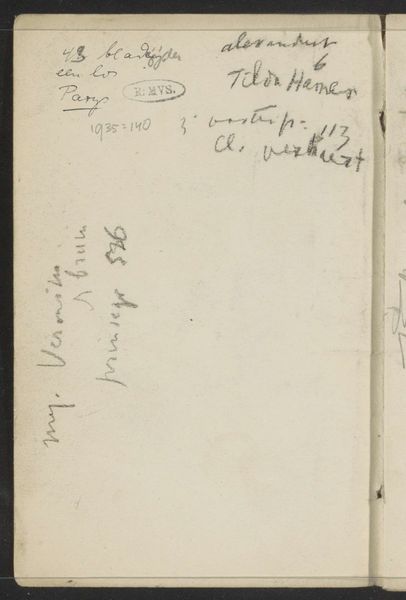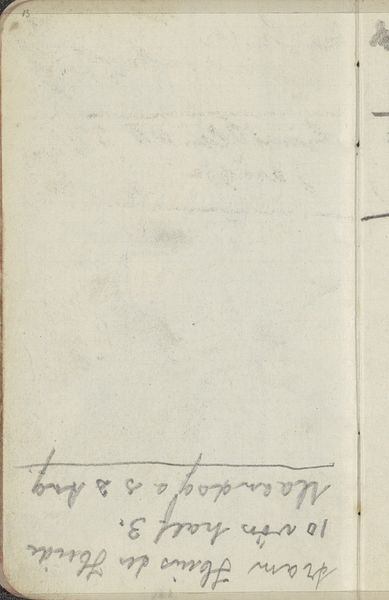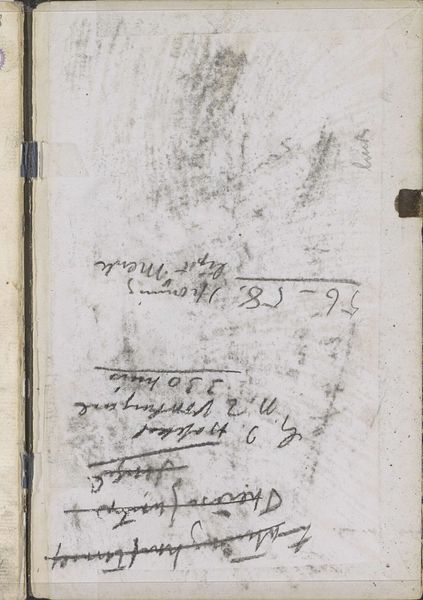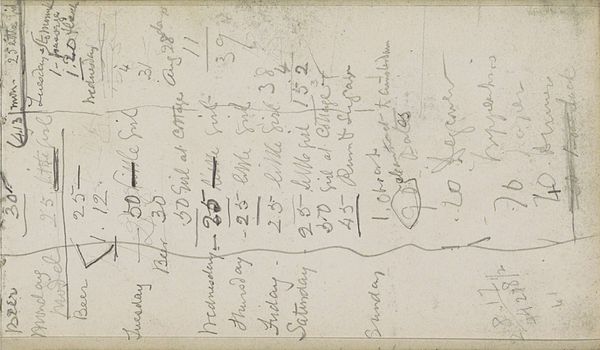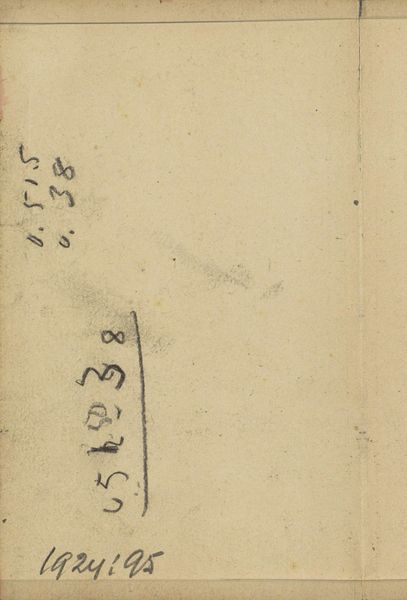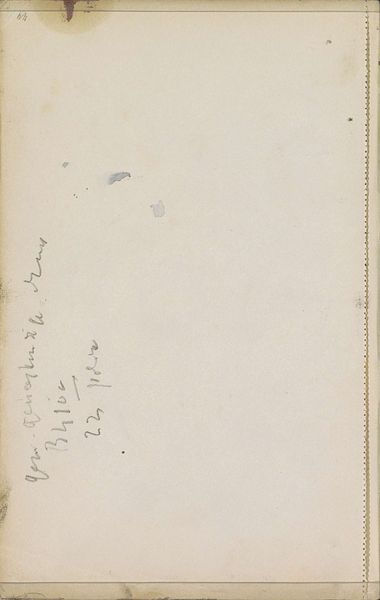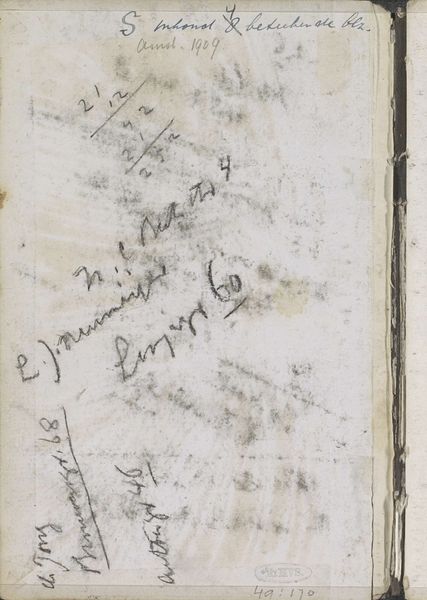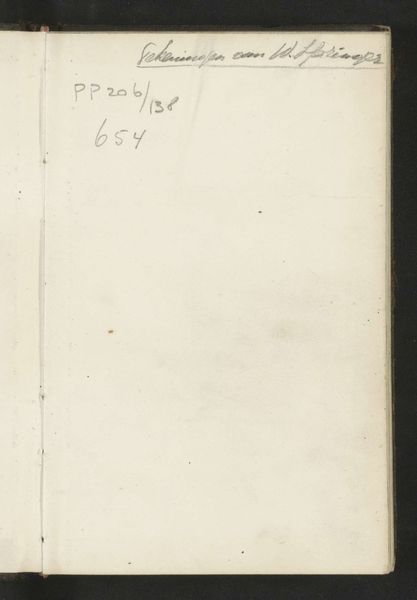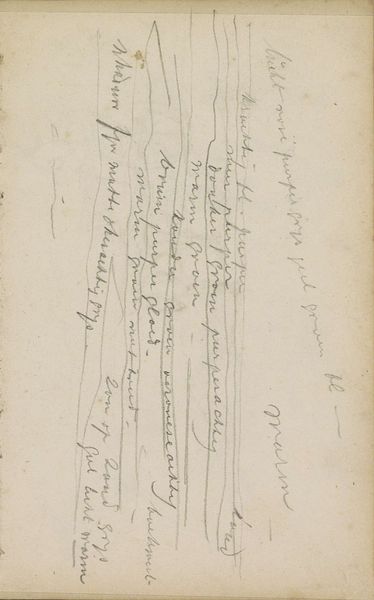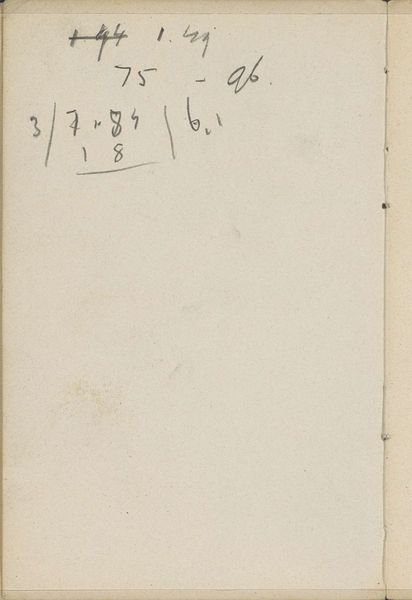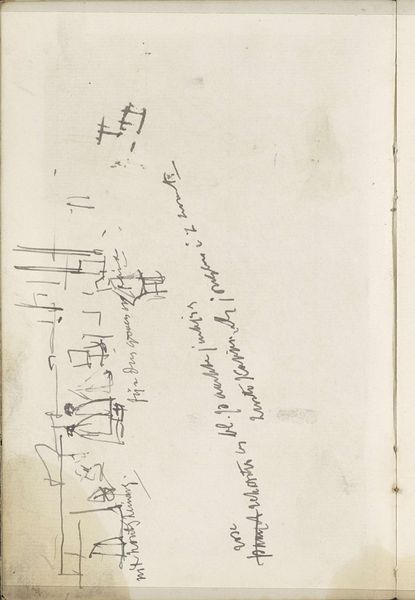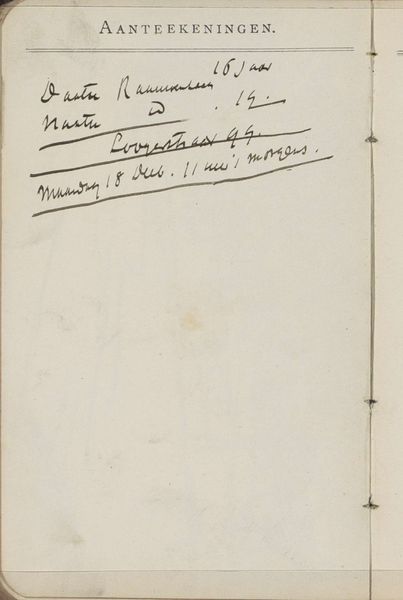
drawing, paper, ink
#
drawing
#
paper
#
ink
#
geometric
#
abstraction
#
monochrome
Copyright: Rijks Museum: Open Domain
Curator: Looking at this piece titled "Annotaties" by George Hendrik Breitner, created sometime between 1891 and 1894, one might wonder about its place here at the Rijksmuseum. Editor: I'll admit, my initial reaction is confusion. The scribbled notes in ink on paper, it’s almost aggressively devoid of obvious artistic merit, isn’t it? Where do we even begin? Curator: Precisely! That's its intrigue. Consider Breitner’s role within Amsterdam Impressionism. He sought to capture the immediacy of urban life. These “annotations” are not meant as a finished work, but as a raw glimpse into his process, perhaps notes related to betting on horses, given the recurrent "premie". We’re seeing the artist’s mind at work. Editor: Ah, so the apparent messiness is the point? The frenetic quality of the ink strokes, the ambiguous numbers… It’s a record of thought, more than a presentation. It almost anticipates later movements like abstract expressionism in its raw energy. Curator: Exactly. The social context of art was evolving; the very definition of what constituted ‘art’ was up for debate. Breitner was pushing those boundaries. These annotations subvert expectations. He asks the viewer to value process and documentation alongside polished artistry. Editor: I am compelled to see that the high contrast really serves its purpose, given that its simplicity offers its value, especially with its subtle variations. Maybe this is less about high art and more about giving people a space into the daily musings. Curator: Absolutely, the piece's public role becomes one of invitation, it almost gives space for the public to connect with Breitner and imagine his Amsterdam. Editor: Seeing it now, "Annotaties" acts as a time capsule. We're peering into a fleeting moment of an artist’s life, unbound from convention. Curator: Agreed. And understanding it is a good lesson, an invitation to appreciate both the intention behind an image and its reflection to greater meaning.
Comments
No comments
Be the first to comment and join the conversation on the ultimate creative platform.

